You may not know who he is but if you’ve ever seen amazing images of fireflies on the internet, it’s a pretty safe bet that Radim Schreiber was the person behind the camera that created them.
As a filmmaker and photographer, when I see amazing work, I like to know who the person is behind it. That’s how I first started following Radim’s work. One look at his work and you know it involves a lot of technical skill, patience and vision.
I had an opportunity to shoot with Radim during the World Series of firefly events, the synchronous fireflies of Elkmont in the Great Smokey Mountains National Park.
Synchronous fireflies differ from the fireflies I see at home. The fireflies that I’m used to randomly “blink” on and off twinkling above the prairies and fields of Iowa.
Synchronous fireflies on the other hand all “blink” at once. The forests around Elkmont will be so dark that you can’t see your hand in front of your face then suddenly the forest explodes in flashes of yellow/green light as thousands of fireflies flash together in unison five to eight times then stop as the forest once again goes black.
The display is so popular that the park service has had to severely limit the amount of people allowed into the area during the week the fireflies are expected to peak.
This year over twenty thousand people applied just for eighteen hundred permits that would allow them to park at the Sugarland visitor center, miles away, and then board a trolley to be driven to the trails where the fireflies would be.
 A couple of years ago, I started getting back into photography and one of the reasons was specifically to be able to film the night sky. Being out under the starts in dark skies photographing the Milky Way has been an amazing experience. So when the opportunity came to be able to film thousands of earth-bound “stars”, I knew I had to pack up the camper and make the trek to Tennessee.
A couple of years ago, I started getting back into photography and one of the reasons was specifically to be able to film the night sky. Being out under the starts in dark skies photographing the Milky Way has been an amazing experience. So when the opportunity came to be able to film thousands of earth-bound “stars”, I knew I had to pack up the camper and make the trek to Tennessee.
I spent the first two days in the Great Smokey Mountains National Park hiking to waterfalls, filming sunsets and getting a feel for what the park had to offer a photographer.
On the third day in the park, I shifted to night operations.
I set out on my first attempt, Monday afternoon before the expected peak, so I was allowed to drive right up to the parking lot adjacent to the trails. Not really knowing where to go I asked a man who was unloading some folding chairs if he was going to watch the fireflies and he nodded his head. I asked if he could point me in the direction I needed to go. He gave me several pointers and said I could follow him to where he had a great spot the night before.
When we arrived at his spot, there were already several people who were there including a photographer I had met early that morning while hiking up to Laurel Falls. It was a long wait as the synchronous fireflies don’t “wake up” until around 9:30 at night.
As the sun began to set, more and more people filed into the clearing in the forest.
Non-synchronous fireflies begin the show at dusk. They are what I’m used to seeing back home. Random flashes of yellow/green sprinkled in the clearing and deeper into the forest.
As the light level dropped, so did the activity of the non-synchronous fireflies. The opening act had left the stage preparing for the headliners. The funny thing is, I really didn’t realize when or how the main event began until it had already started. Don’t ask me how I failed to notice the moment thousands of fireflies all started flashing in unison, but I did!
When I finally realized that the synchronous fireflies had awaken, it was the most awe-inspiring natural event I had ever seen, the only exception being the total solar eclipse I saw the year before in Grand Tetons National Park.
Literally everywhere you looked, thousands of flashes simultaneously pieced the darkness for several seconds before the entire forest once again went dark. After five to ten seconds, it started all over again, going on for several hours before slowly starting to die down.
The spot where I set up the first night was easy to walk to and that was reflected in the number of people who had gathered there. Dozens of people in lawn chairs and flip-flops crowded the clearing. As more people came, they ignored park rules about covering lights with something red so as not to disrupt the fireflies as much. The light was blinding at times.
It was a constant stream of people in and out, flashlights firing up, even flashes on cell phones blinding everyone in the clearing.
The amazement I felt watching the fireflies was tempered that first night by all the lights people had brought into the forest. Now that I knew what to look for, I decided the next night I would strike out on my own.
Night Two
The second night I hiked further down the trail that I had been on the night before. I’ve always said the further away you get from the road, the less people you encounter. This held true as the second night I probably only saw half a dozen people the whole night.
I set up this second night over a picturesque little stream maybe two feet wide at its widest. If fireflies appeared here, it would be epic!
Since this was only my second night and my first finding a spot on my own, I started second guessing myself about the location. Eventually, doubt won out and I decided to pack up my gear and hike further down the trail. The farther I went, the more it looked like poor firefly habitat. I decided to go back to my original spot. When I returned, I found another photographer had set up in exactly the same spot that I had my tripod set at. I was upset with myself for letting self-doubt winning and abandoning my spot.
Sarah and “Critter” were both from North Carolina and Critter had found the spot the day before and “snuck in” hoping no one else saw him. I told him I was just there not twenty minutes ago and I thought it was a great spot as well. I asked Critter if I could set up close by but not anywhere that would interfere with his shooting since he now had “dibs” on where I had just been. Critter didn’t mind and the three of us had a good conversation while we waited for the fireflies to wake up.
Once darkness fell in the forest, we started seeing fireflies but not that many. We waited in the darkness but the fireflies really didn’t appear.
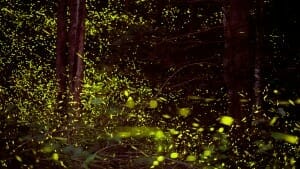 I happened to look behind me back towards the trail and it looked like there were way more fireflies there than in front of my camera. I mentioned to Critter and Sara that I thought I was going to go back to the trail and set up there. Critter agreed that back near the trail was where all the action was. So the three of us abandoned our epic little stream and walked back to the trail and set up.
I happened to look behind me back towards the trail and it looked like there were way more fireflies there than in front of my camera. I mentioned to Critter and Sara that I thought I was going to go back to the trail and set up there. Critter agreed that back near the trail was where all the action was. So the three of us abandoned our epic little stream and walked back to the trail and set up.
The fireflies were indeed much more plentiful but the problem was it was already dark and I couldn’t see anything to compose a shot. So I just pointed my camera towards the brightest concentration of fireflies and shot there until the activity died down around midnight.
As far as I was concerned, the night was a success but my images were just points of light in the darkness while Radim’s images also showed the surroundings and had depth. I hoped my third attempt would be better.
Night Three
I’m not sure what made me realize that I wasn’t on the trail that Radim and the park ranger suggested. I had been going down the trail that everyone was going down and seeing fireflies in good numbers. However, once I realized it wasn’t the right trail, I decided to find the trail I was supposed to be on and follow that for the next nights shoot.
I was a little uneasy as I walked down the correct trail. Everyone was headed down the trail I had been on the two previous nights but on this trail, I walked alone. It was the trail Radim said I should be on and the park ranger said the same, so off I went. Again I found a perfect stream, this one wider and more picturesque than the previous one. I set up and waited for darkness to fall.
The “normal” fireflies started blinking at dusk and I could see a few in my viewfinder so I figured that the big light show was going to be unbelievable. As I later learned however, fireflies don’t like to fly over water.
So again I looked around and noticed maybe twenty yards from the stream the mother lode of fireflies were putting on a light show. Again, I packed up my gear and hurried down the trail and set up to capture what I could. Again, moving in the darkness meant that I couldn’t see my composition and while I captured hundreds more fireflies the previous nights, they were still points of light in the darkness.
Night Four
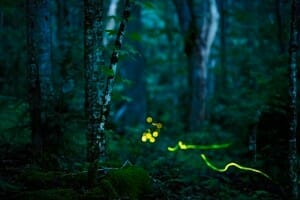 The next night was the first night that the park enacted the restrictions to limit the number of people who could view the fireflies. I had reserved a campsite in Elkmont campground so I had a golden ticket that allowed me past the road closure and get much closer to where the fireflies would be. This was also the night that Radim would be arriving and I looked forward to learning whatever secrets he was willing to share.
The next night was the first night that the park enacted the restrictions to limit the number of people who could view the fireflies. I had reserved a campsite in Elkmont campground so I had a golden ticket that allowed me past the road closure and get much closer to where the fireflies would be. This was also the night that Radim would be arriving and I looked forward to learning whatever secrets he was willing to share.
Radim arrived early evening and after chatting a while we packed up our gear and headed up the road to meet the trail where I had hit the jackpot the night before. Radim confirmed what I already discovered the hard way that fireflies don’t like to fly over water.
Now, there are two types of artists, those that are willing to share their secrets and those that aren’t. Radim wasn’t holding anything back. As we walked, he unloaded years of knowledge that he learned by trial and error. Now I’m not going to give away any of those secrets since they are his and his to decide if he wants them shared or not.
So I showed Radim where I hit the jackpot for fireflies the night before and in the light of day, there really wasn’t a pleasing composition to be found. So we moved on until we found a spot that Radim thought had potential if the fireflies also agreed it was a nice spot.
On Radim’s suggestion I changed from a very wide-angle 20mm lens to a fast 135mm f2 lens. This limited what was in view but had the potential to make for a much better image. We talked about composition with Radim offering valuable tips based on years of filming fireflies. Finally, we were ready.
It’s amazing how a few yards can make a difference as to how many fireflies appear. While not the mother lode I had seen the night before just yards down the trail, this more visually appealing location still produced impressive numbers of fireflies. As I completed each exposure, I checked the results and was like a kid opening presents on Christmas. In just a couple of hours, Radim had transformed my images from simple points of light against a backdrop of blackness to fireflies interacting in their environment. This is how I wanted my images to look all along but didn’t know how to make it happen.
Once the fireflies started to go quiet, we packed up our gear and headed back down the trail towards the campground. Radim must be part ninja because other than using a red headlamp to make sure he had all his gear packed up, he didn’t need any light to make his way down the trail. I on the other hand, needed every lumen my red headlamp put out to see where I was going and even then it was a tossup whether I’d fall flat on my face or not.
Next morning, Radim and I sat down to go over his workflow for processing images.
Radim is a firm believer in minimal processing. He doesn’t believe in adding things that weren’t present when he captured the scene or deleting things that were. Several times when we were looking for compositions we found some that initially looked great but on closer scrutiny revealed power lines in the background. Wanting to be as perfect as possible in camera when he trips the shutter, we moved on, looking for a scene that stood on its own.
Night Five
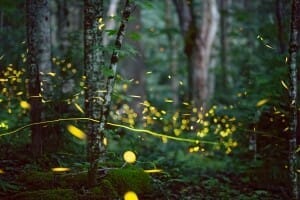 The transfer of his secrets complete, we set out that night and Radim said he wanted me to find a composition that moved me. Not too far from where we shot the night before I finally found a spot that I liked. Of course, what looks good in the daylight, doesn’t look the same in the darkness.
The transfer of his secrets complete, we set out that night and Radim said he wanted me to find a composition that moved me. Not too far from where we shot the night before I finally found a spot that I liked. Of course, what looks good in the daylight, doesn’t look the same in the darkness.
Radim knew it wasn’t an ideal spot but he used the opportunity to try a risky composition. If the fireflies cooperated he would have mossy rocks and foliage in the foreground illuminated by the light of fireflies. If they didn’t, he wouldn’t have a shot but he’d still be out in nature enjoying the light show.
While we were waiting for the darkness to fall and the fireflies to clock in, Radim continued providing great constructive criticism on my composition, and providing further insight into what he looks for in his compositions. I knew my shot would be somewhat flat and Radim definitely knew it was going to be flat but he was game to see how it turned out.
The spot I picked ended up not having as many fireflies and of course, the areas Radim thought would make for better compositions did. That’s why he’s the master. I still like the image that resulted from that night, a lone Blue Ghost fireflies trail of light going between two trees really saved the shot.
The night finally came to a close, Radim, scouting locations as we walked back to the campground planning tomorrow nights shot, me, melancholy because I would be heading back to Iowa in the morning.
We chatted for a while at the campground, said our goodbyes and promised to stay in touch.
Radim is the master of firefly photography. He is a master not only because he put in the time and effort to get to the top, but his images come from the heart. I remember as we were looking for a composition, he reminded me to be careful as the fireflies were beneath our feet and he felt like we were treading on sacred ground.
I’ve often felt that I shoot from the heart and while the differences may be subtle compared to those that don’t, they are there.
Radim felt comfortable with his skill as a photographer and his connection with nature to not hold anything back when it came to sharing his secrets with me. He’s an artist without an ego and comfortable in his skills as well as his eye.
I’m hoping to get back to the Smokies and Elkmont again next year. I’ve only scratched the surface of photographing the park in the daytime and look forward to putting my new skills filming synchronous fireflies to work.
In the future if Radim decides to hold workshops and share his secrets, I’d encourage you to attend one. He’s the best at what he does and he really enjoys interacting with people.
If you want some inspiration for your photography, pick up a copy of Radim’s amazing book on Amazon. I backed his Kickstarter campaign to get this published and have since purchased several more copies to give away as gifts.


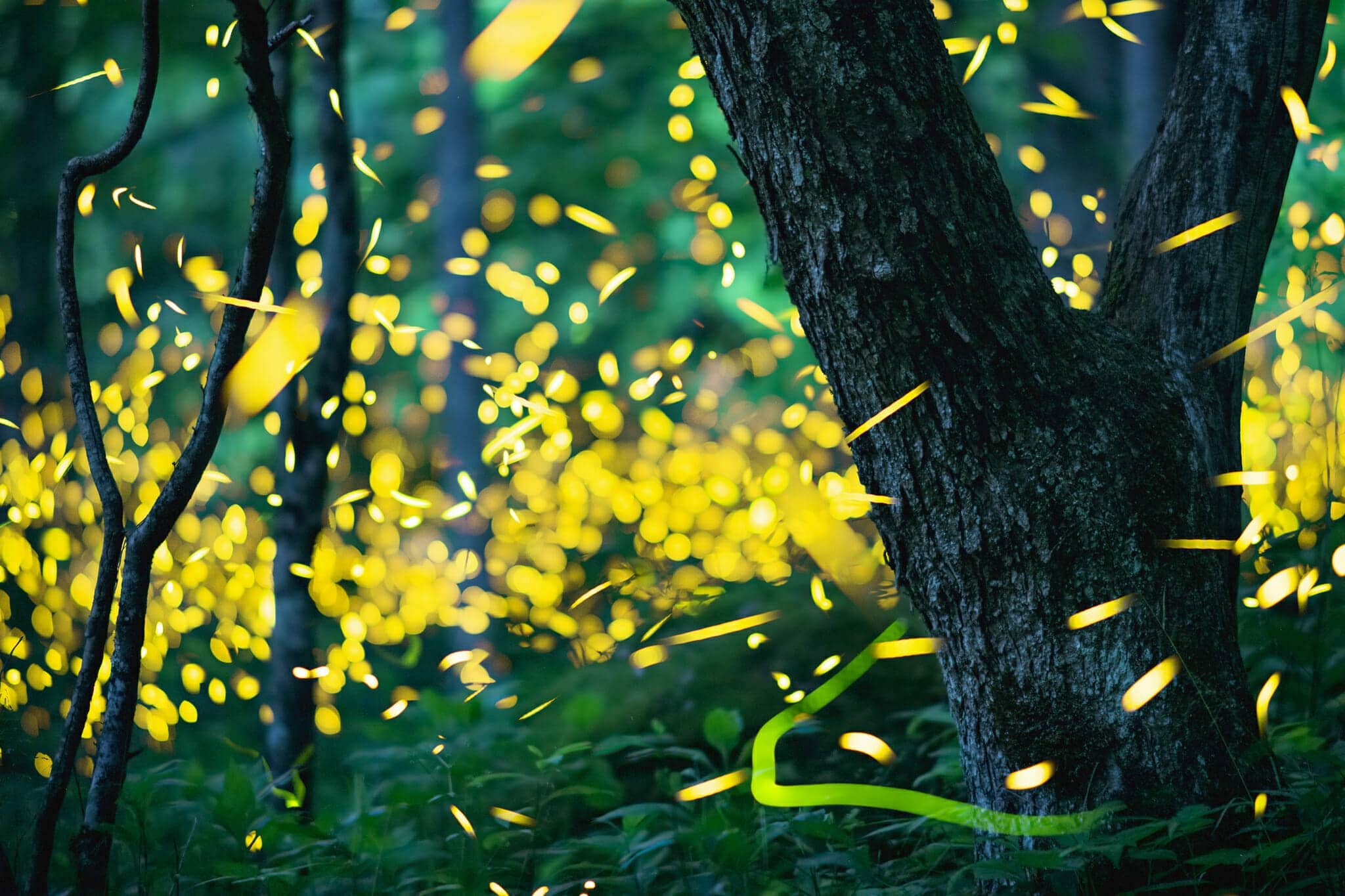
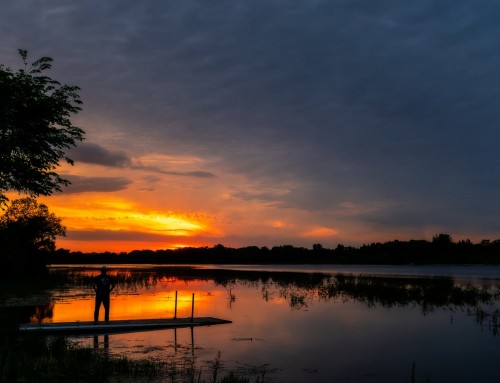
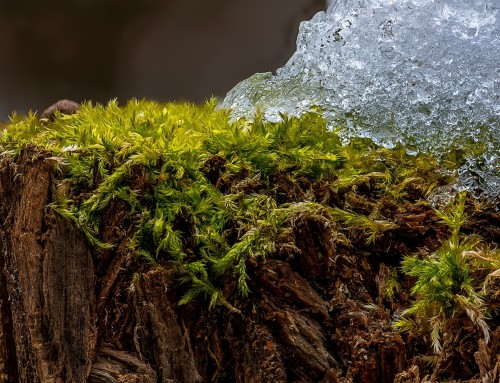

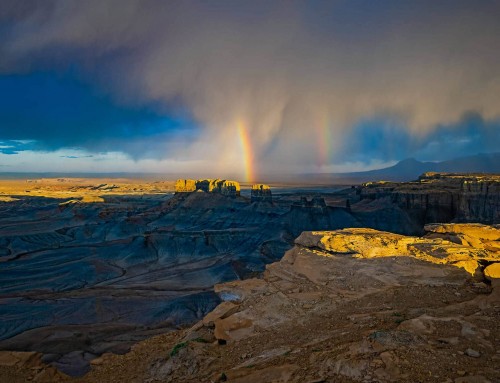
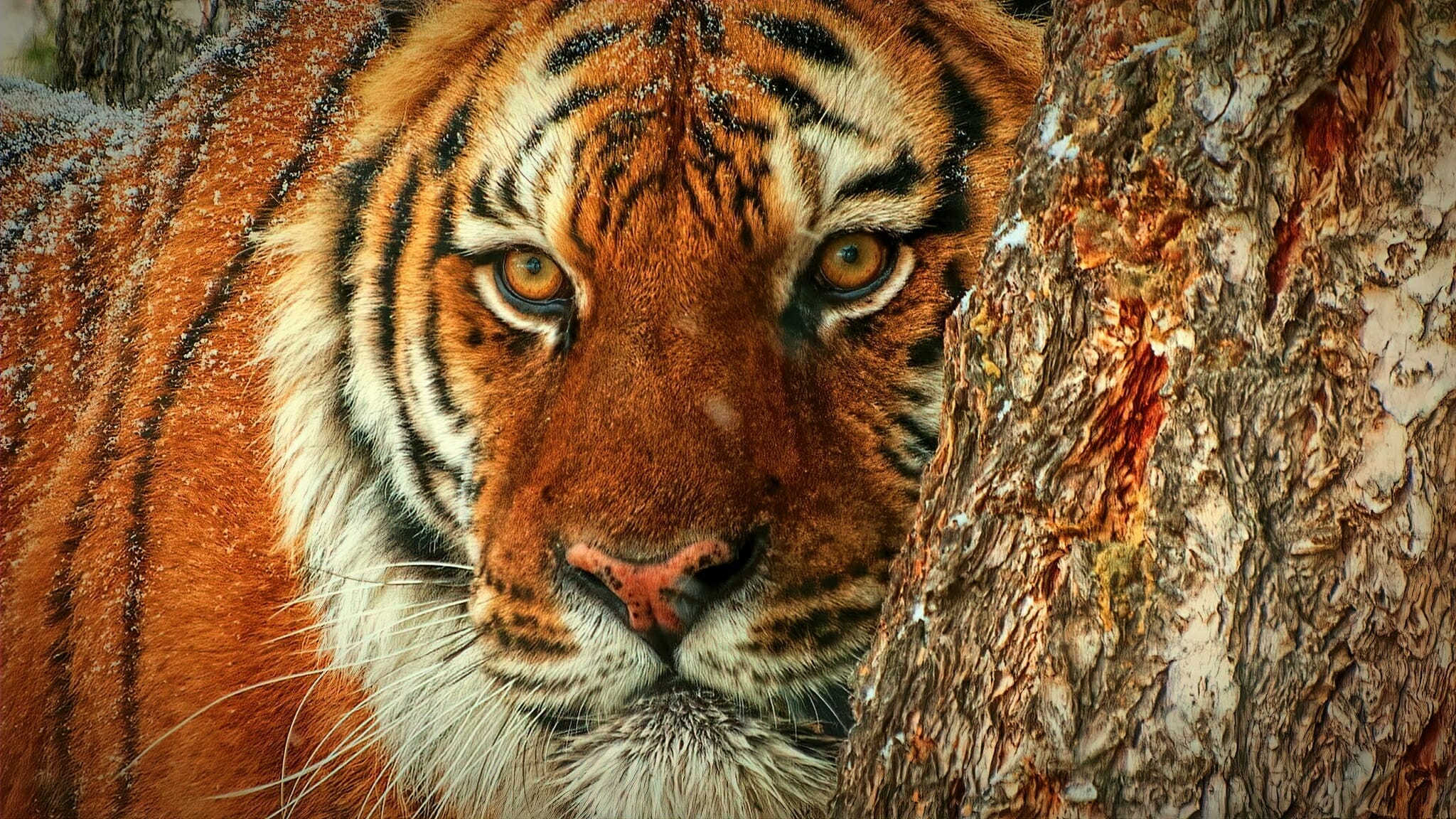
Let me know if you come back to photograph fireflies next year. I’ve been going to Elkmont for around 7 springs now and each time is magical. Maybe we could shoot together for a night if we both go there. I like your photos and philosophy.
Ruth,
I plan on being there the first week of June next year.
We should definitely go shoot while I’m there!